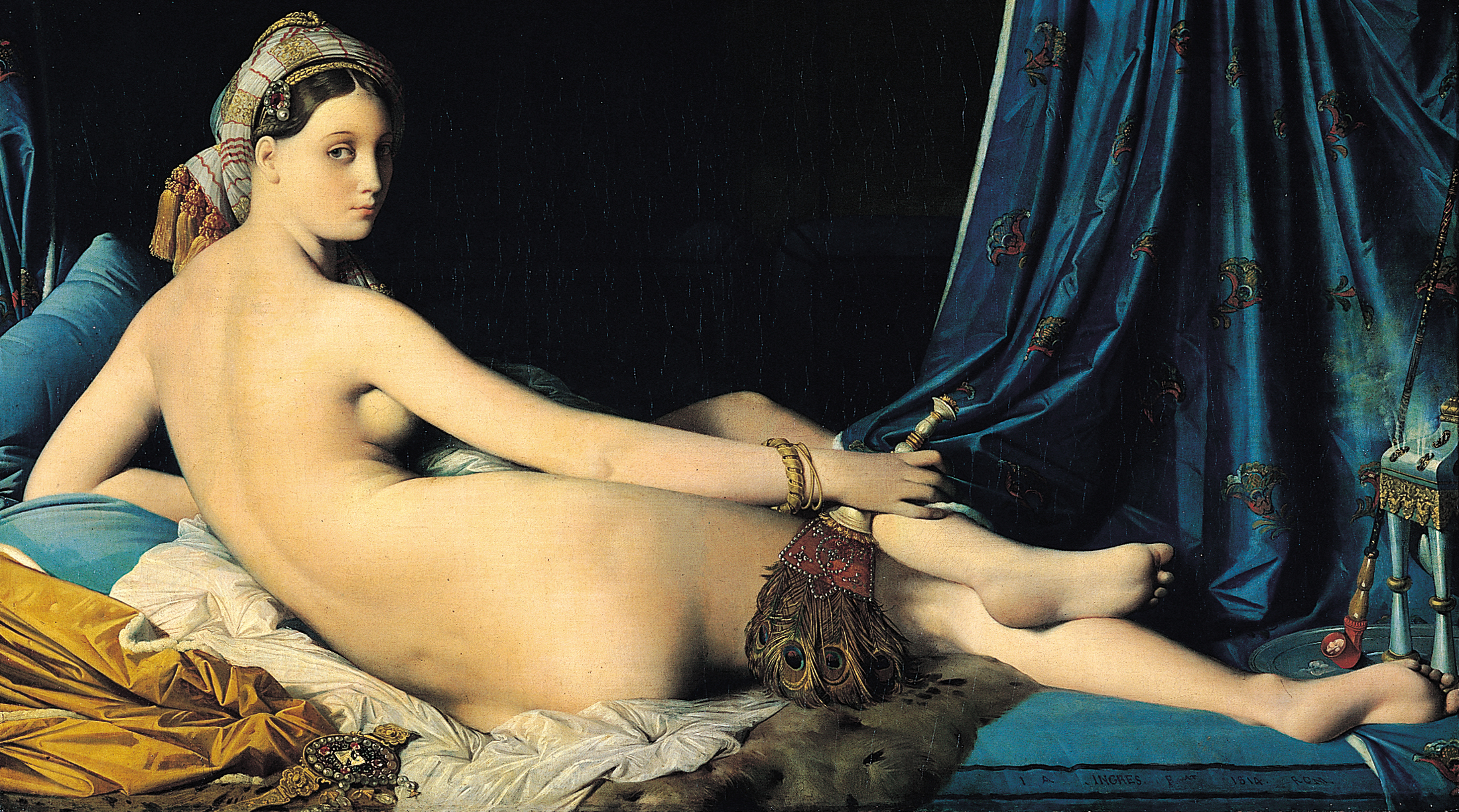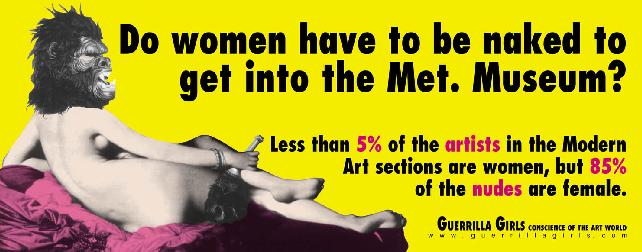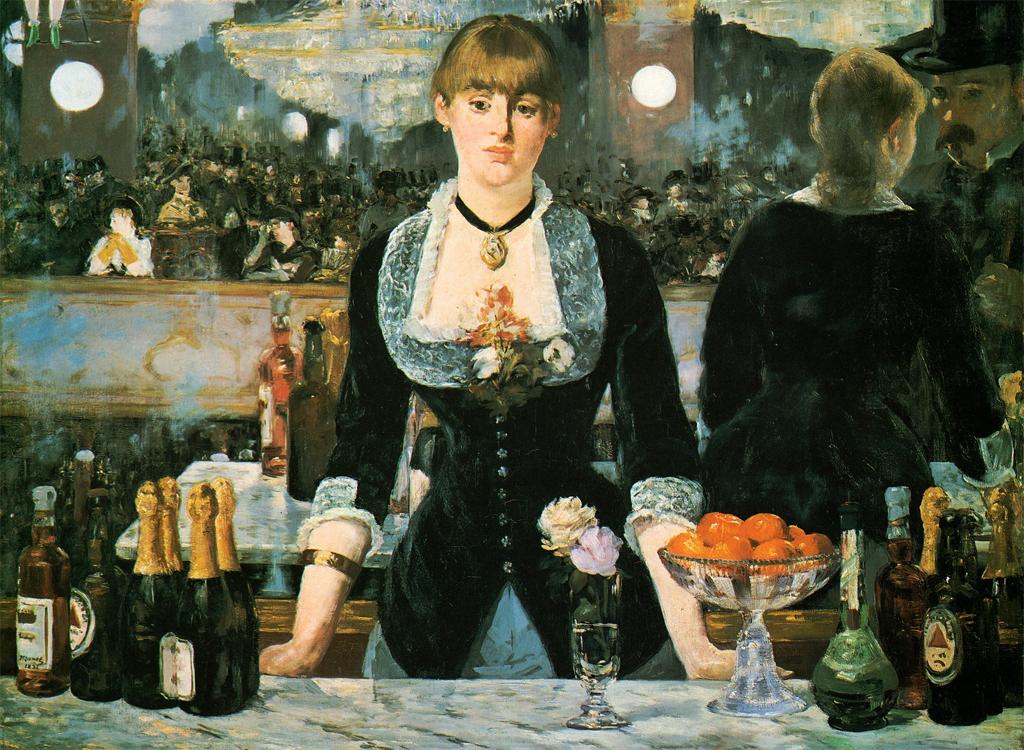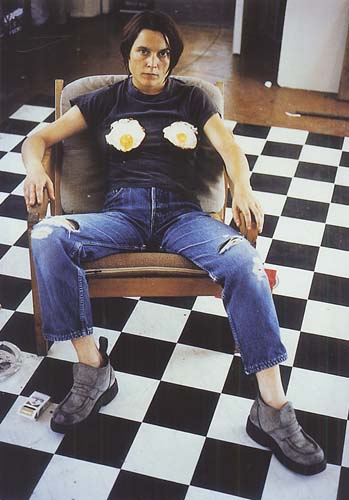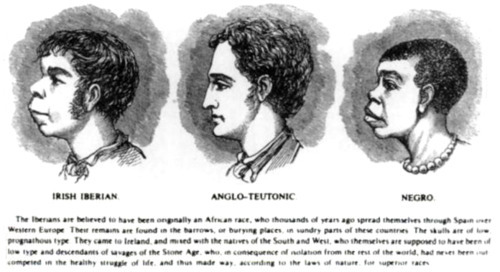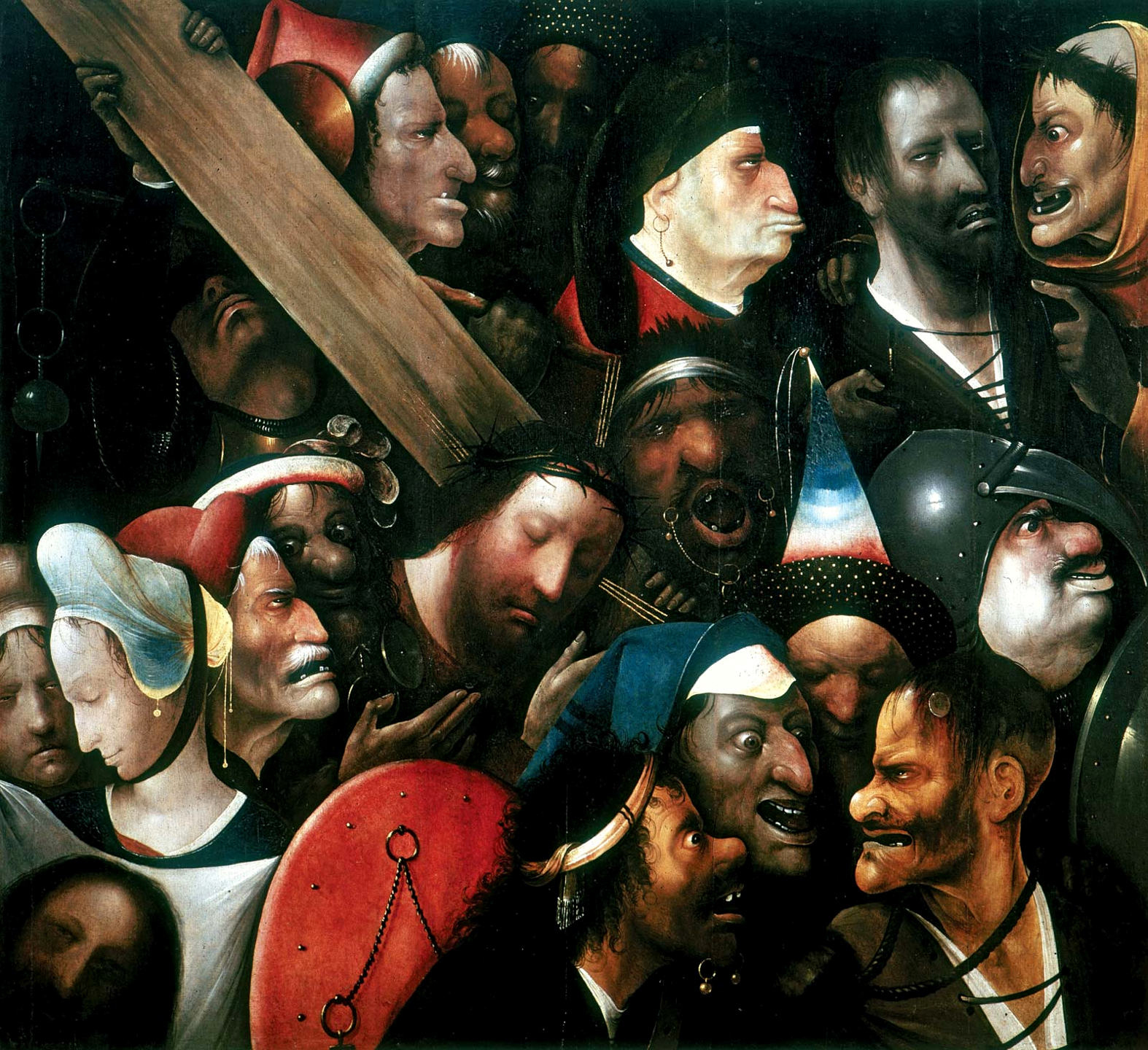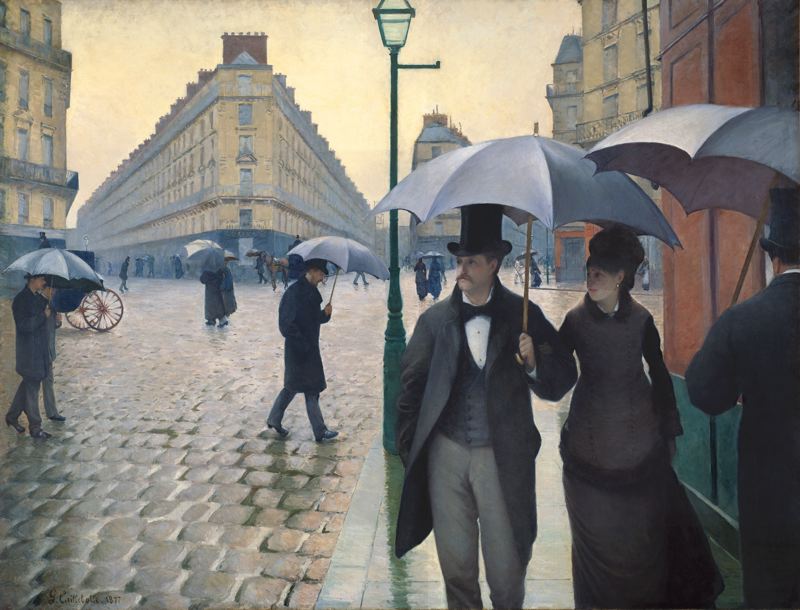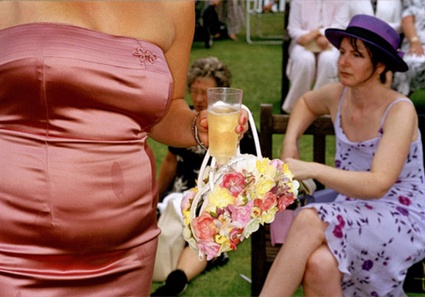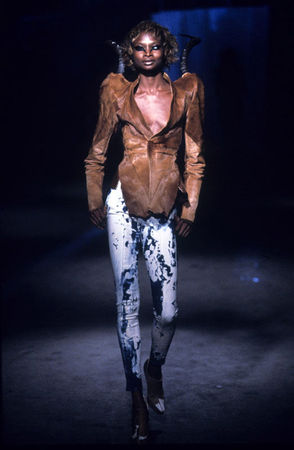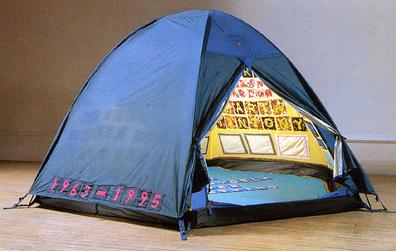Men look at women and women internalise the gaze. They internalize this habit of looking at themselves and how other women are presented in the media.
Hans Memling - 'Vanity' 1485
The artist painted her out of pleasure, but the use of the mirror shows that she is looking at herself.
The device of the mirror occurs in contemporary advertising all the time. The use of the mirror allows you to look at the woman without feeling like she knows you're watching, almost spying on her.
Alexandre Cabanel - 'Birth of Venus' 1863
We are left as the viewer to regard the naked body uninterrupted. No challenge for our gaze as the woman isn't looking back at you. She doesn't know you're looking. We are invited by the artist to gaze upon the figure and so does the woman herself in the painting.
Sophie Dahl advert for Opium
Deemed to be too overtly sexual with the hand on the breast and the naked body. So they turned the advert on it's side when it came to publishing, which changed the emphasis of the picture onto the face rather than the body.
Flirtatious look in her eye makes you feel as though you are invited to look at her.
Manet - 'Olympia' 1863
Example of the slight difference in the pose to 'Venus of Urbino' as there is a difference in the woman's gaze. She is looking us in the eye directly, so there's a challenge to the gaze. The hand position is significant as there is a definite position of the hand to stop you from viewing that part of her body. The woman in the painting is actually a prostitute / cortisone - rather than a goddess figure she is a modern nude.
Ingres - 'Le Grand Odalisque' 1814
Recreated by The Guerilla Girls to challenge the classic painting.
Manet - 'Bar at the Folies Bergeres' 1882
Offers a skewed perspective as the mirror behind her reflects her back but not in the way it would be in real life. We are actually put in the position of the painter himself as you can see him in the painting. She has this look of exclusion as she isn't a part of the Paris society in the background.
Jeff Wall - 'Picture For Women' 1979
Pastiche of Manet's painting, but with a focus on the camera rather than the painter. Wall has separated himself from the female figure. The complex use of space refers to the use of space in Manet's painting.
Coward, R - 'The Look' (1984)
"The camera in contemporary media has been put to use as an extension of the male gaze at women on the streets"
Women in advertising often wear sunglasses as the gaze cannot be returned. You can look at her without feeling that you're being looked back at.
Eva Herzigova, Wonderbra Campaign, 1994
Normalisation of the unclothed female body in the street. The woman is looking down so there is no return of the gaze so you can survey her body.
Coward, R - 'The Look' (1984)
"The profusion of images which characterises contemporary society could be seen as an obsessive distancing of women... a form of voyeurism" - when reviewing the film 'Peeping Tom' 1960. He films women in the moment of death and murders them. The objectification is at an extreme.
Males are objectified in advertising just as much as women. However, men usually return their gaze.
Marilyn: William Travillas dress from 'The Seven Year Itch' 1955
Use of Freudian theory to study spectatorship in Hollywood cinema. Looks at the ways films are made in terms of the male gaze. Looks how bodies are chopped up by the camera and looks at the framing where certain parts of the female body would be shot in close up in a sexual scene.
She notes that lecture theatres and cinema auditoriums are darkened rooms where you can fantasise and admire the film footage. Can be argued that they are sexually charged environments.
"pleasure in looking has been split between active / male and passive / female" (Mulvey 1992, 27)
Artemisia Gentileschi - 'Judith Beheading Holofernes' 1620
Unusual that females have more active roles in mythology and aren't usually beheading or committing murder.
Pollock, G (1981)
Women have generally been left out of Art History and generally the artist as a genius is always given to a male figure. Women are 'marginalised within the masculine discourses of art history'
Cindy Sherman - 'Untitled Film Still #6' 1977-79
The meaning of the work doesn't completely lie with the maker of the work. Similar to Sophie Dahl's work where the woman is in a reclining position but the image has been turned upright so that the focus is on her face.
Barbara Kruger - 'Your Gaze Hits The Side of My Face' 1981
Reference to why can't we look at the female body?
Sarah Lucas - 'Eating a Banana' 1990
Challenging the gaze. Refers to the sexual connotations of the banana
Sarah Lucas - 'Self Portrait With Fried Eggs' 1996
Slightly humorous but at the same time a serious comment on the kind of language used to describe women with flat chests. You can't look at her without feeling a challenge to the gaze.
Tracey Emin - 'Money Photo' 2001
Challenging the criticism that she came across as her work not being real or genuine due to how much money she was making. Came across as a prostitute.
Criadio-Perez argued that as the Equality Act 2010 commits public institutions to end discrimination. She received up to 50 threats a day via Twitter including threats to rape and murder. Although she reported the abuse, police lost evidence and she was forced to delete her account.
Campaign to represent women on British currency as Elizabeth Fry on the £5 was scheduled to be replaced by Winston Churchill. Criadio-Perez stated that if she were to be replaced, they should use another positive female role model from history instead.
Social Networking is used to perpetuate the male gaze / the gaze of the media.
"Like if you hate your body </3" Facebook picture, receiving thousands of likes.
The body is broken into fragments - could be any female. Plays on teenagers body consciousness, potentially carrying those perceptions into adult life.
Susan Sontag (1079) - 'On Photography'
'To photograph is to appropriate the thing photographed'
This relates to the paparazzi photograph of Princess Diana. If the shots didn't exist, the market wouldn't be there. A perpetuation of that cycle and need for paparazzi images - the desire to see the mask of the celebrity lifted and to see them as ordinary people.
Reality TV appears to offer us the position as the 'all seeing eye' - the power of the gaze. Allows us a voyeuristic passive consumption of a type of reality. Editing means that there is no reality. Contestants are aware of their representation (either as TV professionals or as people who have watched the show).
Peter Weir - 'The Truman Show' (1988)
Big Brother seems to offer the equality of the sense that it's not just female bodies to be gazed upon, but male bodies are gazed upon as well. The gaze at it's worst as they can't see us but we can see them all the time. We are the Peeping Tom.
Looking is not indifferent. There can never be any question of 'just looking' - Victor Burgin (1982)
Essentialism
Traditional approach to identity. Our biological make up makes us who we are. We all have an inner essence that makes us who we are.
Post modern theorists disagree.
Physiognomy
The idea that the perfect person is a strapping, blonde hair, blue eyed human being.
Phrenology
Cesare Lombroso (1835-1909) - founder of Positivist Crimonology: the notion that criminal tendencies are inherited.
Hieronymous Bosch (1450-1516) - Christ carrying the Cross 1515
Almost sub-human. Resembling animalystic features.
Chris Ofili - Holy Virgin Mary 1996
This painting appeared in an exhibition in 1997 at The Royal Academy. Countless New Yorker's complained that the painting was insulting to Christianity.
Douglas Kellner - Media Culture: Cultural Studies, Identity and Politics between the Modern and the Postmodern, 1992
pre modern identity - personal identity is stable - defined by long standing roles
Institutions determined identity.
'Secure' identities
Farm-worker - landed gentry
The Sodier - the state
The Factory Worker - industrial capitalism
The Housewife - patriarchy
The Gentleman - patriarchy
Husband-Wife - marriage / church
modern identity - modern societies begin to offer a wider range of social roles.
Charles Baudelaire - The Painter of Modern Life (1863)
About the abstract notion of painting and illustration of life. Contemporary with the impressionists. Introduces the concept of the 'flaneur' (gentleman-stroller).
Thorstein Veblen - Theory of the Leisure Class (1899)
'Conspicuous consumption of valuable goods is a means of reputability to the gentleman of leisure'. Conspicuous consumption is about showing off wealth in terms of goods, clothes, money etc.
Gustave Caillebotte - Le Pont de l'Europe, 1876
Gustave Caillebotte - Paris Street, Rainy Day, 1877
Georg Simmel writes about 'The Trickle Down Theory', emulation, distinction, the 'mask' of fashion. The idea that when you get a new collection of fashion, everyone has to have it.
Edvard Munch - Evening on Karl John, 1892
Image of people out and showing themselves off on the streets, but you get this vacant look of anxiety on their faces. A notion of alienation in society and people withdrawing themselves to be alone.
Simmel suggests that: because of the speed and mutability of modernity, individuals withdraw into themselvs to find peace.
Post-Modern Identity
'Discourse Analysis' - identity is constructed out of the discourses culturally available to us.
'A set of recurring statements that define a particular cultural 'object' (eg madness, criminality, sexuality) and provide concepts and terms through which such an object can be studied and discussed.' - Cavallaro.
Possible Discourses:
age, class, gender, nationality, race / ethnicity, sexual orientation, education, income, etc
Class
Humphrey Spender / Mass Observation - Worktown Project, 1937
Bolton Library has a full collection of these photographs.
Martin Parr - New Brighton, Merseyside from The Last Resort, 1983-86
He's celebrating the condescending way of viewing people who go on holiday in England from the working class. Almost like a self congratulatory thing - a way of looking at these people to perpetuate sterotypes of classes.
Martin Parr - Ascot, 2003
Nationality
Martin Parr, Sedlescombe, from Think of England, 2000-2003
Martin Parr, Think of Germany, Berlin, 2002
Alexander McQueen, Highland Rape Collection, 1995-96
Like a political statement between England and Scotland. Highly emotive.
Vivienne Westwood, Anglomania Collection, 1993-94
Las Vegas
American identity - is it a real identity at all in terms of national identity? Or is it just a mixture of all these identities from elsewhere. The idea of none of it as actually real.
Race / Ethnicity - 'Otherness' (based on the notion that it is based around a history that is written for white Eurpean middle-upper class heterosexual men.)
Chris Ofili - No Woman, No Cry 1998
References to black culture and Bob Marley song. Uses elephant dung as a stereotypical reputation of something black and African. Uses the elephant dung as stands for his paintings, as well as necklaces / additions to the paintings.
Chris Ofili - Captain Shit and the Legend of the Black Stars, 1994
Analyses super heroes, and notices that there aren't very many black superheroes.
Gillian Wearing - Signs that say what you want them to say and not signs that say what someone else wants you to say, 1992-1993
Alexander McQueen - It's A Jungle Out There, 1997-98
Emily Bates - Dress - Created using her own hair
Bases her work on her identity of being Scottish and red headed. Spent most of her life being called names for being red headed.
As a red headed woman, Emily Bates feels empowered by a painting by Titian - Saint Mary Magdalene, 1532
Gender & Sexuality - 'Otherness' (based on the notion that it is based around a history that is written for white Eurpean middle-upper class heterosexual men.)
Edmund Bergler - American psychoanalyst - suggests that the fashion industry is the work not of women, but of men.
Flapper, 1925
Cover of La Garconne, by Victor Marguerite, 1922
Cindy Sherman, Untitled Film Stills, 1977-80
Takes stereotypes of female characters in film - fragile, taken from a male perspective of how women are represented.
Sam Taylor-Wood - Portrait (Fuck, Suck, Spank, Wank), 1993
Sarah Lucas - Au Naturel, 1994
Tracey Emin - Everyone I have ever slept with, 1963-95
Winderbra Campaign - I can't cook. Who Cares? 1990s
Gillian Wearing - Lynne, 1993-96
Post Modern Theory
Identity is constructed through out social experience.
Goffman saw life as 'theatre', made up of 'encounters' and 'performances. For Goffman the self is a series of facades
Zygmunt Bauman - Identity (2004), Liquid Modernity (2000), Liquid Love (2003)
Barbara Kruger - I shop therefore I am, 1987
Feminist artist - criticised for using her art in Selfridges (has she sold out?), also a notion that this has been seen as a sponsored art exhibition. Is it the perfect place to view it?
Tom Hodgkinson - 'With friends like these...', Guardian, 2008
Bauman - Identity, page 27, (2004)
Sherry Turkle - Constructions and Reconstructions of the Self in Virtual Reality (1994)
Online adultery and cyberspace love documentary.
+Vanity++1485.jpg)





